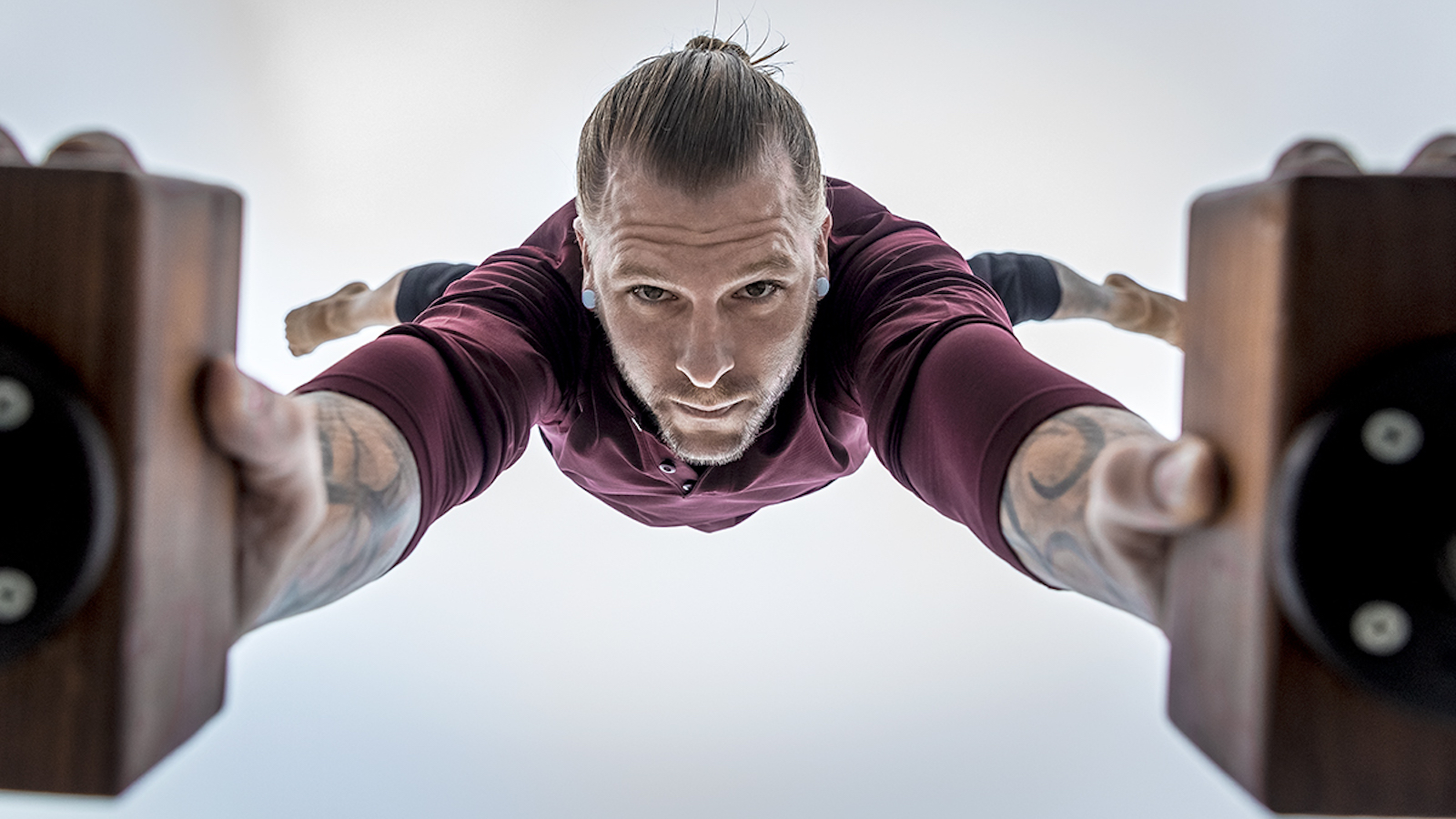Teachers, does this sound familiar?
You’re drained, running on empty, burning the candle at both ends. You’ve taught 12 classes already this week, and with four to go, you wonder what you have left to give anyone.
You haven’t gotten much sleep. You’ve not eaten all day and you’re super low-blood-sugar. Or maybe you’re just feeling kind of quiet and blue; your dog just went in for surgery to remove a lump, or your grandmother is ailing, or you just found out you didn’t get that job (or that date) you really, really wanted.
Whatever the case — your gas tank is empty, and you’re feeling decidedly short on the kind of chutzpah required to power through being an inspiring yoga-guru for the next 90 minutes. How are you supposed to emcee a dance party when you’d rather curl up under the covers and hibernate?
I’ve been mentoring a few [awesome] teachers lately as they study for their 500hr certifications, and this is one of the topics that has repeatedly come up. Most of us wellness professionals can relate to this, yeah? If you teach long enough, you’ll surely experience burnout at some point. It’s the nature of the biz. (And the nature of being human, to be honest.)
For newer teachers especially, who are often hustling from location to location teaching 10-15 classes a week, it’s not an option to cut back to a more reasonable number. Add in urbanity, commuting, and a high cost of living, and you need to keep teaching a robust regular schedule to afford to pay your rent and eat a decent meal now and then, too. The luxury of cutting back to just a few inspired classes a week is one that’s often only available to established teachers with large followings, or folks with another full-time job that takes the financial pressure off yoga teaching.
Wellness professionals — whether yoga teachers, Pilates teachers, massage therapists, acupuncturists, you name it — well, we give a lot. The very nature of our craft is that you put yourself out there, physically AND emotionally. You can’t just hide in a cubicle with your headphones on and fritter the workday away online waiting for the clock to hit 5pm so you can escape to your sofa. You need to show up, in every way — whether you’re feeling en fuego or exhausted.
The upside for those of us who really love teaching is that so much comes back to us, too. How lucky are we to do the kind of work that makes us feel MORE alive when we finish? Many times over the years I’ve walked into a class feeling kind of neutral (shall we say sattvic, or quietly balanced, to keep it Ayurvedic?), and walked out feeling buzzingly-alive, connected, inspired. How cool is it that we get to do that kind of work? It really is a blessing.
Here are a few things to remember on the days when you might struggle for inspiration:
[av_hr class=’invisible’ height=’50’ shadow=’no-shadow’ position=’center’ custom_border=’av-border-thin’ custom_width=’50px’ custom_border_color=” custom_margin_top=’30px’ custom_margin_bottom=’30px’ icon_select=’yes’ custom_icon_color=” icon=’ue808′ font=’entypo-fontello’ av_uid=’av-6vifkgp’]
1. Take a deep breath.
Are you breathing? Chances are, probably not. Take a few good deep ones. You’re gonna be fine.
2. Eat a little snack.
Seems silly, I know. But check in. Have you eaten enough today? Grab an apple or a Lara Bar or a handful of almonds or, yes, even a Snickers. (And enjoy the hell outta that Snickers.) It might just give you the oomph you need.
3. Grab a chai or a cup of coffee.
Sure, there’s caffeine in there, which can provide a little motivational kick in the pants when you need it. But it’s more than that. It’s the concomitant ritual of self-care that goes a little deeper. Sit down quietly with the chai and notice, “Oh hey, I feel quiet and/or flat today,” and give yourself the space to be just that. (This is meditation, yo. Witnessing the feelings you’re feeling without thinking they’re YOU. Realizing they will always pass.) Taking just those few minutes of focusing, of slowing down, can make all the difference. Sometimes just pushing pause on the constant multi-tasking hustle can re-energize you.

4. Realize that it’s not YOU doing the work.
It’s easy to get caught up in the illusion that you’re putting on a show, that you’ve gotta come up with some brilliant original material and hold people’s attention for a good 90 minutes. False. Let that shiz go. This is not your rodeo. You’re just being a vessel for spirit. You’re offering your hands, your body as a vehicle for the divine. And your job is to show up, get out of the way, and let the yoga move through you.
5. “Knees down, Hips back, Child’s Pose.”
Keep it simple, sweetheart. Stick to the basics. No need to blast ‘em with some ninja-complicated sequence. No need to reinvent the wheel. The simplest yoga poses can go so far. When I was first starting to teach and feeling the pressure to impress, an early mentor of mine told me, “Rachel, it’s easy. Knees down, hips back, Child’s Pose.” Done. I think of that sometimes even still.

6. Remember: you don’t have to be a charismatic preacher.
That’s not your job. And teaching yoga is not a performance. Nobody’s paying $15 to jump around and entertain them for an hour. The students you are blessed to serve just want someone to help them get out of their heads and into their bodies. They want to stop thinking about their lives for an hour. They want you to tell them how to move so that their bodies and minds feel better when they walk out the door. It’s not about you, and it was never about you. So let go of the idea that you need to put on a Super Bowl half-time show complete with pyrotechnics and rainbows shooting out your butt. All you need to do is lead a solid, strong practice.
7. Take it one pose at a time.
I remember teaching during the very early days of my pregnancy, before anyone yet knew. I was feeling so nauseous and weak, but couldn’t tell anyone. A few minutes into some of those first trimester classes, I’d think to myself, “Ohmygosh, how am I going to make it 87 more minutes?” Rather than getting caught up in the enormity of the energy output you need to garner, come back to this moment. Come back to this very breath. Instruct the low lunge you’re holding folks in for the next five breaths. Make it to the other side. Take it step-by-step, pose-by-pose, without looking ahead to the scope of the class remaining. You’ll be ultra-present and deeply involved, and it will flow by smoothly before you even realize it’s over.
8. Don’t put on a perky mask. Let yourself be real.
I’ve long said: Yoga doesn’t mean you have to be perky all the time. Yoga means you get to be REAL.
Some of my favorite teachers are exactly that because they allow themselves to be who they are. They don’t try to fit some archetypal image of who they think a yoga teacher “should” be. Perhaps the most intimate and most inspiring thing you can do is to let yourself be real, too. If you’re feeling quiet, let yourself be quiet. If you’re feeling vibrant, by all means, radiate, baby. But don’t feel like you need to put on a charade when you walk in the door. People want a teacher who’s human, not a machine.
Virginia Woolf said it best: “No need to hurry. No need to sparkle. No need to be anybody but oneself.”

9. Let go of the need for a theme.
Some schools of yoga encourage you to always teach around a theme, a heartfelt quote, a peak pose. I say: screw that. You don’t need to come wielding Hafiz. Leave the hastily-scribbled Rumi instagram quote in your purse. Don’t stay up all night devising the most pretzel-y sequence that ever was.
Provide a well-rounded practice with equal parts warm-ups, standing poses, seated poses, backbends, and forward folds, and you’ll be fine. Sometimes the nugget of wisdom you were searching for comes up when you least expect it, when you’re there three breaths into Camel Pose. Let it.
10. Trust in the inherent wisdom of the practice.
Everything students need is already there in the practice. You are just driving the bus. The school bus has it all, already. In fact, it’s tricked out, man.
The first yoga sutra, Atha Yoga Anusasanam, means exactly this. You chant that simple sutra to open the class and in so doing say: “Ok, I’ve got everything I need, already, right here, as I am. In this jiggly body. With these tight hamstrings. With this bum shoulder. And this racing mind. Now is the time for the yoga to begin.”
That’s what’s so awesomely radical about yoga, of course. You don’t NEED expensive shoes. You don’t NEED a climbing wall. And, in spite of what the ads tell you, you don’t NEED the $108 pants. All you need is your breath, a little space, and your bare feet. From there, you build the heat, you open it up, you slow it down, you wring it out.
Leading the practice is the same way. Even if you come into the room and just start counting the breaths, instructing the poses, folks will get exactly what they need. They don’t require you to balance spinning plates and juggle elephants while wearing sequins. And sometimes…
11. Silence says more than you ever could.
When in doubt, hand it over to silence. Let the stillness fill students’ hearts and minds. Don’t resort to anxious chattering to try to fill it up. How does that classic saying go? “Don’t speak unless you can improve upon the silence.” Yup. That’ll do.

Rachel Meyer is a Portland, Oregon-based writer and yoga teacher. Her work has appeared in The Washington Post, On Being, Yoga Journal, Yoga International, Tricycle, HuffPost, and more. You can find her at www.rachelmeyeryoga.com.








